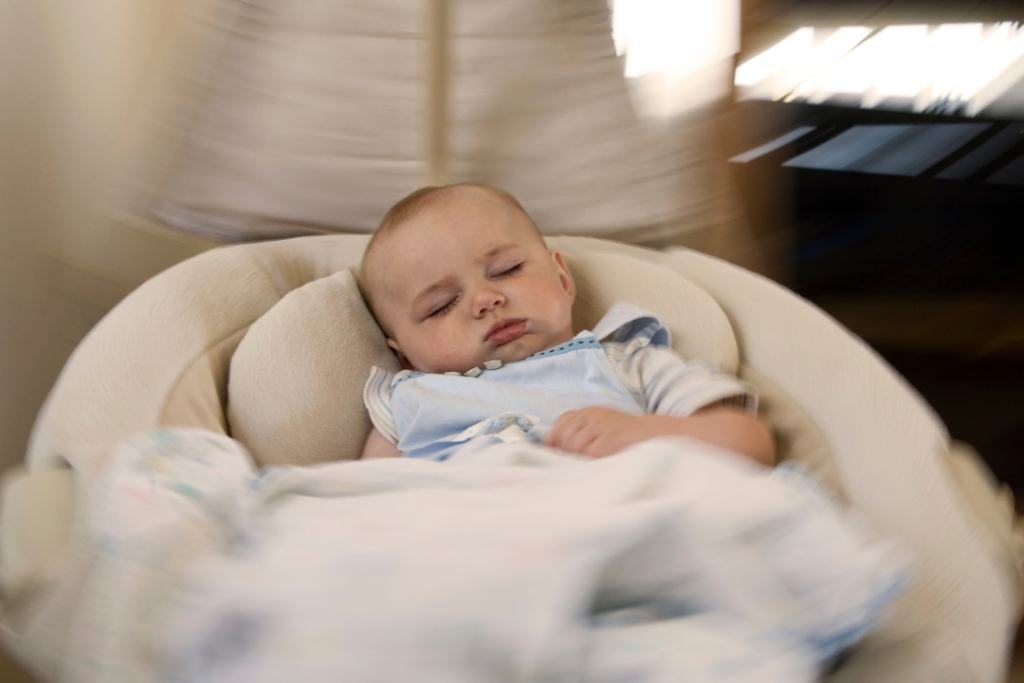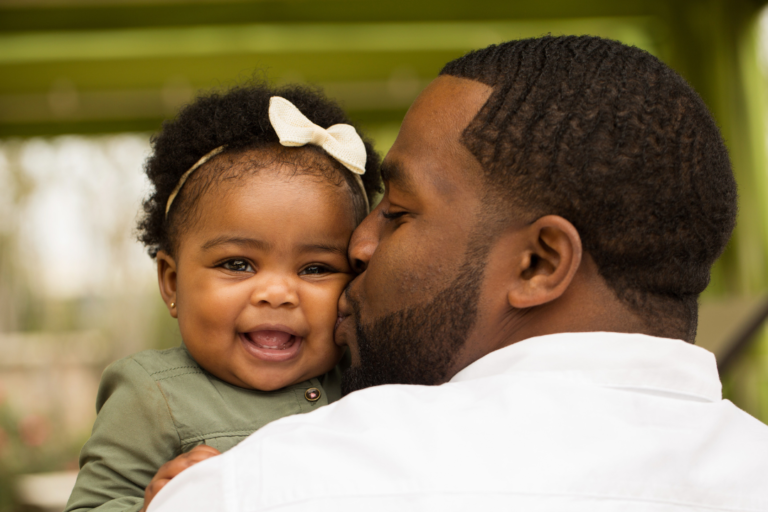Baby swings can be a great source of entertainment and relaxation, but baby swing safety is of utmost importance to ensure your baby’s well being. Not everyone will agree, but I’m a big advocate of swinging as a method of soothing a baby. I have recommended it to moms in my clinical OT practice for many years. A safe park swing in the fresh air is great but not always practical.
Used consciously and within the safety guidelines, a motorised baby swing can provide a calming, womb-like lulling motion. That said, it’s important to note that a baby swing should never be used as a babysitter or for long stretches at a time (more on this later).
In this article, I’ll delve into the essential guidelines, potential risks, and best practices to ensure your baby’s swing time is both enjoyable and secure. We’ll also discuss the potential risks associated with improper usage or neglecting safety precautions. In the end, you’ll be empowered to make informed decisions when selecting and using a baby swing. Let’s get started!
Understanding Potential Risks: Common Concerns with Baby Swings
Baby swings can be a wonderful addition to your child’s routine but it’s important to be aware of potential risks so you ensure their safety. Remember that when used correctly, baby swings are safe but leaving your baby unstrapped or overloading the swing with blankets or toys can pose risks like:
- falls
- entanglement hazards, and
- suffocation
These are obviously all serious risks and the reasons you should never skip safety protocols or take short cuts when using a baby swing. If you’ve taken proactive measures to create a secure environment for your baby, you can mitigate these risks and enjoy a worry-free swing experience.
Choosing the Right Baby Swing: Safety Considerations and Features
When it comes to selecting a baby swing, safety should be your top priority. Choose reputable brands that come with manufacturing warranties and look for the following features:
- Sturdy construction
- Clear weight limits
- Secure harness systems
- Adjustable speeds
- Safety testing confirmation labels or stickers
Every baby swing you are considering should tick all of these boxes. Additional features that are nice to have but not essential are removable mobiles with hanging toys, music and/or different types of movement (not only swing speed). It’s also a good idea to choose a swing that has a reasonable weight limit so you can use it for as long as possible, i.e. 3 – 13kgs for example.
Guidelines for Proper Use: How to Safely Operate a Baby Swing
Operating a baby swing correctly is crucial for your child’s safety and well-being. There are a few steps you should follow every time you use your baby swing. They are:
- Secure your baby in the swing using the harness system. Don’t skip any straps and use them as they are intended. Remember to adjust the harness as your baby grows. It should fit securely but not be too tight.
- Line the swing with a blanket or cover your baby with a blanket but be careful not to overload the swing with too many blankets or toys.
- Set an appropriate swing speed – gentle is always more calming.
- Maintain a vigilant watch – don’t disappear into the next room or leave your baby unattended. Baby swings aren’t babysitters so keep an eye out for potential hazards.
Other tips to consider is that baby swings often use batteries so be sure to keep stock of quality batteries in case you need to replace them. Most baby swings come with removable covers so you can wash them in case of any spills or accidents. Always replace covers as they’re meant to be used. Don’t forget to give your baby plenty of play time on their tummies to build back and shoulder strength needed for rolling and crawling. You also want to use play mats on the floor to give your baby a chance to stretch and kick their little legs.
Lastly, baby swings are a great way to interact with your baby calmly as they happily sway back and forth. Try to avoid using swings to put your baby asleep. Your baby may become drowsy from the lulling movement but then place them in their cot before falling asleep.
Age and Weight Recommendations: Ensuring Safe Usage for Infants
When it comes to using a baby swing, it’s important to consider age and weight recommendations to ensure safe usage. Follow the manufacturer guidelines regarding the appropriate age and weight limits for the swing you are using. Placing a baby that is too small for the harness into the swing can mean your baby can fall out and suffer an injury. Similarly, using a swing with a baby that’s heavier than the weight limit can make the swing unstable and cause it to topple over or create an uncomfortable swinging experience for your baby.
Familiarise yourself with the age and weight recommendations for your baby swing and follow them to the letter.
Supervision Matters: Tips for Monitoring Your Baby in a Swing
We’ve already covered why it’s important to supervise your baby while they’re in a swing. As tempting as it might be to slip out for a quick shower or make a cup of tea in the next room, your baby’s safety and well-being should come first. Here are some essential tips for effectively monitoring your baby in the swing:
- Stay within arm’s reach – you don’t want to be too far away to get to your baby should anything happen.
- Maintain visual contact – keep an eye out, don’t rely on your baby crying to alert you that something is wrong.
- Minimise distractions – as tricky as this can be, it’s safer to not try to work, do chores, be on your phone or anything that distracts you from keeping an eye on your baby.
- Be attentive to your baby’s cues – your baby will signal when they’ve had enough or if something is wrong. Pay close attention to their cues and respond accordingly.
Follow these guidelines to monitor your baby effectively – it’s worth the peace of mind knowing that that your baby is safe and secure.
Certifications and Standards: What to Look for in Baby Swings
Make sure that the baby swing you’re purchasing meets the necessary safety certifications and standards. Keep an eye out for recognized safety standards such as ASTM (American Society for Testing and Materials) and JPMA (Juvenile Products Manufacturers Association) certifications, which ensure that the swing has undergone rigorous testing for safety and durability. Additionally, look for other safety features such as non-toxic materials for that extra bit of assurance that you’re using a secure and trustworthy product.
Bear in mind that not all babies will enjoy the swing. Sensory sensitive babies may find the motion too vigourous or stimulating. Prem babies may also find the swinging motion to be unsettling and they don’t feel contained enough. Pay attention to your baby’s reaction and don’t force swing time if they’re not enjoying it. For more about your baby’s sensory personality, take the quiz here.
Lastly, always remember that you are your baby’s favourite toy! Nothing can beat one-on-one time with mom or dad. Be sure to play with your baby every day without using seats or swings or even toys. For a play idea for every day of your baby’s first year, subscribe to Parent Sense. It’s the baby app that takes the guesswork out of raising a baby.




